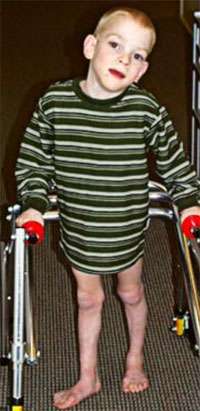Types of CP
Find your care
We care for patients with cerebral palsy in all life stages. To learn more about cerebral palsy treatment at UCLA Health, call .
Cerebral palsy can be classified by the limbs involved or the type of movement disorder. Typically, the two are used together, e.g. “spastic quadriplegia”, for a person whose all four limbs are affected and the primary movement disorder is spasticity.
Classification by limb involvement:

Quadriplegia – all four limbs are affected, from quad meaning four and plegia meaning paralysis, or impaired ability to move.
Diplegia – two limbs are affected, from di meaning two. Although diplegia typically refers to someone whose legs are most involved, the arms may also be affected, but to a lesser degree.
Hemiplegia – from hemi, meaning half. This may also be referred to as unilateral cerebral palsy. Often, the arm is more affected than the leg.
Triplegia – three limbs are affected, from tri meaning three. Usually both legs and one arm are affected. Some clinicians will refer to this type of clinical picture as diplegia with a hemiplegic overlay.
Classification by movement disorder:
People with cerebral palsy may have more than one movement disorder present. Typically, the type of cerebral palsy is described by the most prevalent movement disorder. The most common movement disorder in cerebral palsy is spasticity. Other movement disorders seen in cerebral palsy include athetosis, dystonia, and hypotonia.
Classification by motor function:
One way to classify individuals with cerebral palsy is by their capacity for independent mobility. This system, called the Gross Motor Function Classification System, or GMFCS, describes five levels of mobility and may be used for infants, children, and adults. View more information on the GMFCS, how it is used in treatment planning, and what it can mean for patients and families:
The Manual Ability Classification System (MACS) is a similar scale used to categorize independent arm and and hand use. View more information here: